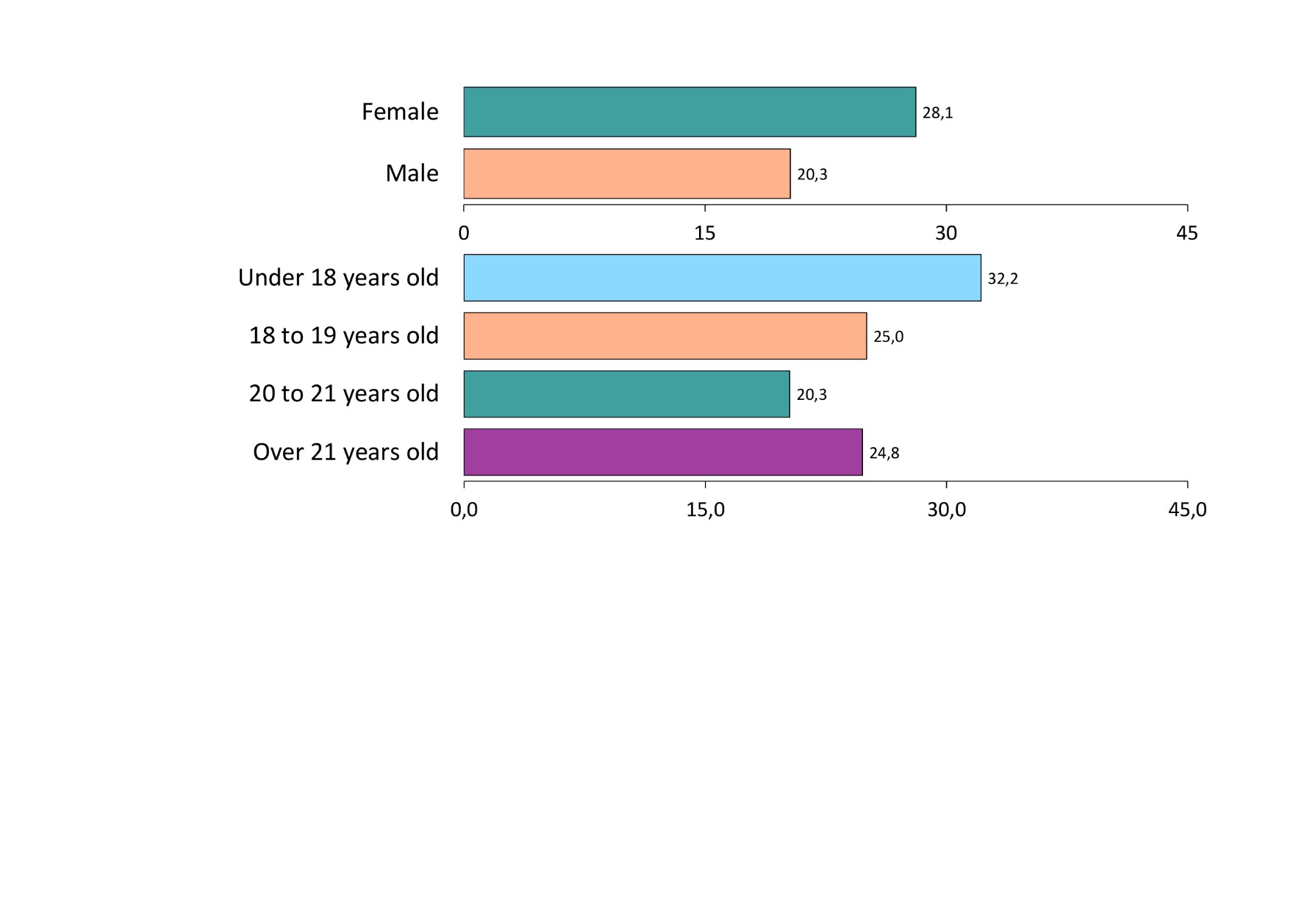Which young people felt loneliest during the third week of the lockdown?
As a part of the collaboration between the Danish National Birth Cohort (DNBC) and the research project Standing Together - at a Distance, young participants between the ages of 16 and 24 were asked to report on their levels of loneliness throughout the COVID-19 lockdown in Denmark. Approximately 13,000 young people responded to our first survey during the third week of the lockdown.
These participants responded to questions from the internationally recognised and validated UCLA loneliness scale, which includes questions about how often they missed having company, felt left out, and felt isolated. Their responses were summarised into a loneliness score ranging from 0 to 6 (with 6 being loneliest), and respondents were categorised as 'lonely' if their score was ≥ 4.
Figure 1. Loneliness on a scale from 0 to 6 for different sexes and ages amongst young people (with 6 being loneliest)
Click on the figure to enlarge
On average, female respondents reported being lonelier than males, and younger respondents between the ages of 16 and 18 experienced more loneliness than their older counterparts; see Figure 1. The pattern was similar when studying the proportion of being lonely; here, more than a quarter of the females and almost a third of all the adolescents aged 16 to 18 rated themselves as being lonely; see Figure 2.
Figure 2. Percentage of respondents defined as lonely (scores ≥ 4) categorised by sex and age
Click on the figure to enlarge


